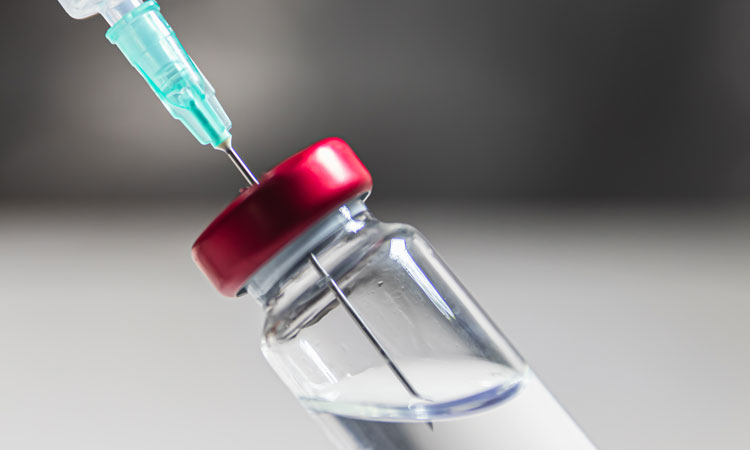Unlocking innovative hydrogel treatments
Posted: 22 April 2024 | Sreekanth Pentlavalli (Queen's University Belfast), Yuming An (Queen's University Belfast) | No comments yet
Researchers from Queen’s University Belfast, Garry Laverty, Sreekanth Pentlavalli and Yuming An, delve into the potential of an innovative ‘hydrogel’ version of the HIV drug zidovudine.


The history of HIV treatment and prevention has been marked by considerable advancements since the introduction of the first drugs in 1987.1 However, one persistent challenge has been patient adherence. Traditional HIV prevention methods involve taking one pill each day (Truvada® or Descovy®),2 a regimen many find inconvenient, while treatment of HIV generally requires patients to adhere to strict daily regimens of multiple pills to effectively manage the virus.3 The transient nature of most HIV drugs within the body demands lifelong, unfaltering commitment – missing even one dose can have severe consequences. However, reformulations of HIV drugs in the form of injectable hydrogels have recently emerged as a game-changer, with potential to significantly improve quality of life for those living with HIV by offering a more convenient and effective way to manage the virus.
Liberating patients from rigid dosing routines
To investigate this issue, researchers from Queen’s University Belfast and the ISIS Neutron and Muon Source have been working on an innovative hydrogel version of zidovudine, a model standard antiretroviral medication used to prevent and treat HIV and the first antiretroviral released to patients. While conventional zidovudine only lasts in the bloodstream for six hours, animal studies using rats revealed that the hydrogel form of the drug can remain in the bloodstream for up to 35 days.4 This extended drug duration is a significant breakthrough with major implications for HIV patients and their quality of life.
The importance of strict patient adherence to medication cannot be overstated – poor drug compliance can result in outcomes such as the development of antimicrobial resistance (AMR) and the need for costly hospitalisation.3 This issue is far from a simple matter of patients’ willpower or intelligence. Patients dealing with multiple medications and intricate dosing schedules often face complex and overwhelming challenges that impact their ability to adhere to prescribed regimens. Long-acting medications can be simple solutions to this issue. These innovations represent a shift towards patient-centric care, recognising the multifaceted nature of healthcare and the need for more accessible, effective and user-friendly treatment options.
The research, which began six years ago with the support of the Wellcome Trust and subsequently funded by several sources including the Engineering & Physical Sciences Research Council (EPSRC), involves linking zidovudine to a short, specially developed peptide. This peptide acts as a carrier for the drug, which can be kept stable as a powder formulation to avoid aggregation during storage – a process in which small molecules within suspension formulation come together to form larger aggregates, which can affect the efficacy and safety of the drug. This is a particular challenge when transporting medicines across several climatic zones and in low- to middle-income countries where cold storage and distribution are more difficult.5
Insights into the molecular distribution, conformation and dimensions of biomaterials are essential for tailoring peptide-based materials for specific pharmaceutical applications
The peptide, initially soluble upon injection into the body, also acts as a slow-release mechanism by transforming into a gel in the presence of certain enzymes to slow down depletion of the drug, allowing for systematic drug delivery throughout the body to prevent HIV replication. This innovative approach allows the delivery of a combination of drugs over several months, liberating patients from the daily medication routine. Furthermore, long-acting treatment also ensures precise dosing, effective viral suppression, and a reduced risk of antimicrobial resistance, marking a significant stride in HIV treatment.
Exploring hydrogels with neutron scattering
Comprehensive understanding of the molecular structure of the hydrogel drugs is crucial for developing and fine-tuning the physical and chemical properties of the treatment, as well as identifying imperfections or areas for improvement before the gels can be tested in human clinical trials. Advanced research facilities and techniques at the ISIS Neutron and Muon Source in Oxfordshire, UK, have transformed our ability to investigate these hydrogels on a subatomic level using neutrons, fundamental particles with unique properties.
Small-angle neutron scattering (SANS) is an innovative experimental technique that leverages neutrons to investigate the structure and dynamics of substances at minuscule scales of around 1–100nm, often used in conjunction with X-ray scattering techniques. Beams of neutrons are passed through a sample, and data is collected on where and when the scattered neutrons hit a detector.
This technique allows scientists to analyse the inner structure of highly complex and disordered systems in a non-destructive way. Many biological materials, including peptides, possess interesting and intricate structural features, which match the length scale ranges that these techniques can access. Peptides form gels that are proven to effectively scatter neutrons, and the resulting data plays a crucial role in understanding the structure of fibrous hydrogel networks.6
Research has demonstrated that by changing the way that peptide gels are formulated – for instance, by employing enzymes, adjusting pH levels, controlling temperature, or introducing specific salts like calcium – it is possible to effectively alter the structure and mechanical properties of fibrous hydrogel networks.7
SANS provides valuable insights into the molecular distribution, conformation and dimensions of biomaterials, shedding light on structural features such as fibre thickness and web connectivity in peptide gels. These insights are essential for tailoring peptide-based materials for specific pharmaceutical applications. Moreover, they hold great potential for continuing to develop ways to extend the lifetime of drugs in the bloodstream, perhaps even beyond 35 days with more potent HIV drugs than zidovudine.
Increasing accessibility to HIV treatment
Additionally, the new hydrogel drug is poised to significantly improve accessibility to treatment. One major advantage is that it can be transported as a freeze-dried powder – powder formulations are easier to transport, addressing common challenges such as drug quality deterioration in suspension formulations, that are faced in areas such as the African continent. In contrast, this powdered form can be mixed with water and injected, offering a more robust solution.5
Long-acting medications also reduce the need for frequent clinic visits, which can lower the overall costs of medical care. While long-acting HIV drugs may have a higher cost per dosage, considering the reduced need for healthcare visits and improved treatment outcomes, the overall cost difference may not be as significant.8 However, further research is necessary to fully assess the cost benefits, especially in low- to middle-income countries in which healthcare systems and infrastructure constraints, and where access to effective HIV therapies, are crucial considerations.
Transforming drug delivery beyond HIV
Beyond HIV treatment, this innovative approach has the potential to act as a platform technology for extending the duration of action of other medicines across countless healthcare areas, including cancer,9 tuberculosis and malaria,10-11 wherein patients often struggle with medication adherence.
In cancer treatment, for instance, hydrogels can be injected at tumour locations to provide continuous local chemotherapy, reducing systemic toxicity and side effects. There are also plans in place to explore its potential for anti-psychotic drugs, as the patients who require them have particular difficulties with adhering to dosing regimens. Reducing the frequency of drug administration can enhance disease treatment and prevention, ultimately improving patient outcomes and quality of life.
Reformulations of HIV drugs in the form of injectable hydrogels have recently emerged as a game-changer
On top of this, there is the opportunity for multi‑drug delivery and multi-purpose prevention; for example, an injectable solution that combines HIV prevention with contraception could both empower women in regions where their rights are often denied and contribute to the prevention of mother-to-child HIV transmission.
However, the technology is still in its early stages of development. The next crucial step involves human trials, in line with the requirements of medicine regulators like the UK Medicines and Healthcare products Regulatory Agency (MHRA) and the US Food and Drug Administration (FDA). Once these milestones are met, mass-manufacturing and broader patient use can become a reality.12 This advancement is a testament to the importance and impact of fundamental scientific techniques, such as advanced neutron scattering techniques, in unlocking entirely new drug delivery mechanisms, with profound benefits for patients.
About the authors


Dr Garry Laverty is Associate Professor in Pharmaceutical Sciences at the School of Pharmacy Queen’s University Belfast. His research focuses on using peptide materials, mostly hydrogels, for drug delivery and biomaterial applications, including as long-acting injectable drug delivery platforms to improve patient adherence to medicines.


Dr Sreekanth Pentlavalli worked as an EPSRC Research Fellow at School of Pharmacy, Queen’s University Belfast. He recently began his career as a formulation Science Lecturer at Bradford University in the UK. His research focuses on biomaterials, in-situ polymer gels, modification of polymers, synthetic organic chemistry, peptide mimics, nanomaterials, and he is investigating the potential of neutron scattering techniques to comprehend the microscopic characteristics of hydrogels.


Yuming An is a PhD student at Queen’s University Belfast researching the potential of peptide hydrogels for use as a long-acting drug delivery platform for combined contraception and HIV prevention. Alongside this, Yuming has accrued valuable experience in neutron scattering studies at institutes such as Institut Laue-Langevin and the Science and Technology Facilities Council, focusing on the intricate microscopic properties of peptide hydrogel systems.
References
- Tseng A, Seet J, Phillips E J. The evolution of three decades of antiretroviral therapy: challenges, triumphs and the promise of the future. Br J Clin Pharmacol. 2015; 79 (2): 182-194.
- D’Angelo A B, Westmoreland D A, Carneiro P B, et al. Why Are Patients Switching from Tenofovir Disoproxil Fumarate/Emtricitabine (Truvada) to Tenofovir Alafenamide/Emtricitabine (Descovy) for Pre-Exposure Prophylaxis? AIDS Patient Care STDS. 2021; 35 (8): 327-334.
- Chen Y, Chen K, Kalichman S C. Barriers to HIV Medication Adherence as a Function of Regimen Simplification. Ann Behav Med. 2017; 51 (1): 67-78.
- Coulter S M, Pentlavalli S, Vora L K, et al. Enzyme-triggered L-alpha/D-peptide Hydrogels as a Long-acting Injectable Platform for Systemic Delivery of HIV/AIDS Drugs. Adv Healthc Mater. 2023; e2203198.
- Lindfors L, Skantze P, Skantze U, et al. Amorphous drug nanosuspensions. 1. Inhibition of Ostwald ripening. Langmuir. 2006; 22: 906-910.
- Draper E R, Dietrich B, McAulay K, et al. Using Small-Angle Scattering and Contrast Matching to Understand Molecular Packing in Low Molecular Weight Gels. Matter. 2020; 2 (3): 764-778.
- Pentlavalli S, Coulter S, Laverty G. Peptide nanomaterials for drug delivery applications. Curr Protein Pept Sci. 2019.
- Parker B, Ward T, Hayward O, et al. Cost-effectiveness of the long-acting regimen cabotegravir plus rilpivirine for the treatment of HIV-1 and its potential impact on adherence and viral transmission: A modelling study. PLoS One. 2021; 16 (2).
- Wolinsky J B, Colson Y L, Grinstaff M W. Local drug delivery strategies for cancer treatment: gels, nanoparticles, polymeric films, rods, and wafers. J Control Release. 2012; 159 (1): 14-26.
- Kim M, Johnson C E, Schmalstig A A, et al. A long-acting formulation of rifabutin is effective for prevention and treatment of Mycobacterium tuberculosis. Nature Communications. 2022; 13 (1): 4455.
- Moehrle J J. Development of New Strategies for Malaria Chemoprophylaxis: From Monoclonal Antibodies to Long-Acting Injectable Drugs. Trop Med Infect Dis. 2022; 7 (4).
- Rafferty J, Nagaraj H, McCloskey A P, et al. Peptide therapeutics and the pharmaceutical industry: Barriers encountered translating from the laboratory to patients. Curr Med Chem. 2016; 23 (37): 4231-4259.
Issue
Related topics
Analytical techniques, Technology, Vaccine Technology, Viruses
Related organisations
Engineering & Physical Sciences Research Council (EPSRC), ISIS Neutron and Muon Source, Queen’s University Belfast, Wellcome Trust
Related drugs
Related diseases & conditions
antimicrobial resistance (AMR), HIV (Human Immunodeficiency Virus)









